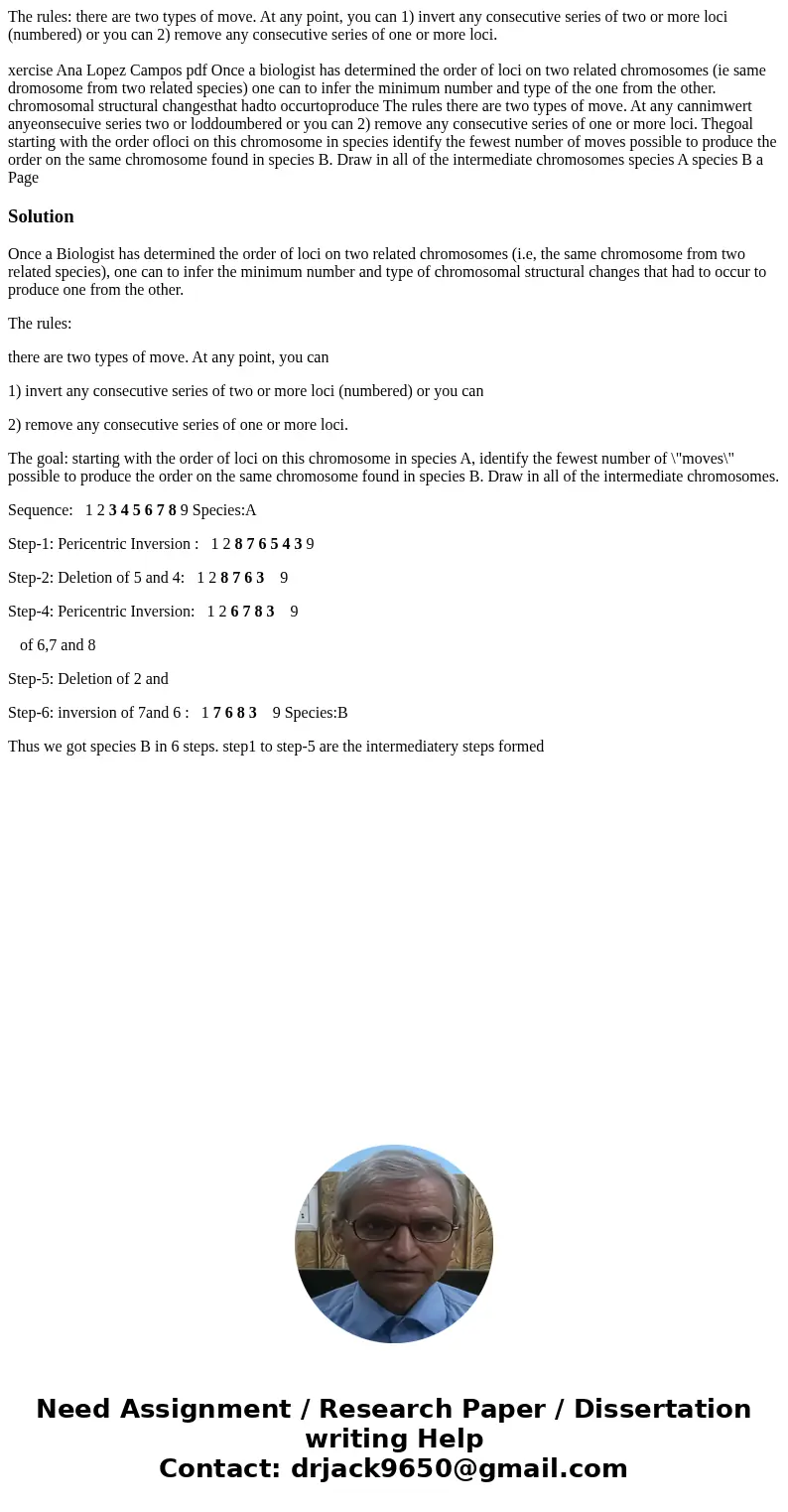The rules there are two types of move At any point you can 1
Solution
Once a Biologist has determined the order of loci on two related chromosomes (i.e, the same chromosome from two related species), one can to infer the minimum number and type of chromosomal structural changes that had to occur to produce one from the other.
The rules:
there are two types of move. At any point, you can
1) invert any consecutive series of two or more loci (numbered) or you can
2) remove any consecutive series of one or more loci.
The goal: starting with the order of loci on this chromosome in species A, identify the fewest number of \"moves\" possible to produce the order on the same chromosome found in species B. Draw in all of the intermediate chromosomes.
Sequence: 1 2 3 4 5 6 7 8 9 Species:A
Step-1: Pericentric Inversion : 1 2 8 7 6 5 4 3 9
Step-2: Deletion of 5 and 4: 1 2 8 7 6 3 9
Step-4: Pericentric Inversion: 1 2 6 7 8 3 9
of 6,7 and 8
Step-5: Deletion of 2 and
Step-6: inversion of 7and 6 : 1 7 6 8 3 9 Species:B
Thus we got species B in 6 steps. step1 to step-5 are the intermediatery steps formed

 Homework Sourse
Homework Sourse